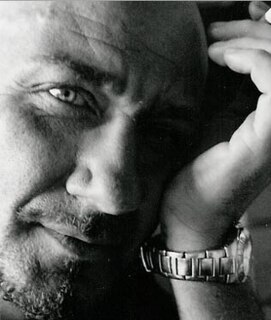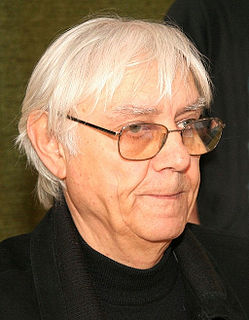| Anna Brandoli | |
|---|---|
| Born | July 25, 1945 Milan, Italy |
| Nationality | Italian |
| Area(s) | Artist |
Notable works | La Strega Cuba 42 |

Anna Brandoli (born 25 July 1945) is an Italian female comic book artist.
| Anna Brandoli | |
|---|---|
| Born | July 25, 1945 Milan, Italy |
| Nationality | Italian |
| Area(s) | Artist |
Notable works | La Strega Cuba 42 |

Anna Brandoli (born 25 July 1945) is an Italian female comic book artist.
Anna Brandoli was born in Milan, Italy on July 25th 1945 as World War II was coming to an end. At age fourteen, Brandoli started working in a ceramic warehouse and attended an evening school known as Scuola del Castello. [1] She attended an evening school as an alternative so that she could work during the day. Brandoli studied advertisement graphics at Scuola del Castello while she tried a number of jobs on the side. Eventually, Brandoli settled in the Knorr internal office, where she illustrated brochures for sellers. [1] After advertising, she turned to comic making and eventually collaborates with scenarist Renato Queirolo. They worked together to make comics that took inspiration from researched historical settings and imagination combined to create stories of adventure. [2] Brandoli illustrations included different topics in their comics such as symbolism of power and protagonists that overlap with ideals of the feminist movement. [2]
Born in Milan, Brandoli made her debut in 1977 in Alter Alter magazine. For that magazine, she drew La Strega (The Witch) with Renato Queirolo, who became her main scenarist. [3] This comic was translated in many languages including French (published by Glénat), Danish (published by Carlsen), and Swedish (published by Medusa). In Sweden it is called Rebecca, which was the name of the comic's heroine. Together, Brandoli and Queirolo also published two albums for a younger audience: Colorina and Il Mago di Oz (The Wizard of Oz).
In 1981, Brandoli started the I Testamenti di Sant'Ambrogio (Rebecca) series in the magazine Linus . This series narrates the adventures of a woman living in the 15th century Italy. The series was continued in Orient Express and Comic Art.
In 1988, she produced Alias for Isola Trovata, again with Queirolo.
She also started the Cuba 42 series with writer Ottavio De Angelis, set in the Second World War.

Philippe Vandevelde, working under the pseudonym Tome, was a Belgian comics writer. He was known for collaborations with Janry on Spirou et Fantasio and Le Petit Spirou, and with Luc Warnant and later Bruno Gazzotti on Soda. He also collaborated with Ralph Meyer on Berceuse assassine, and with Marc Hardy on Feux. Earlier in his career he was an assistant-artist for Dupa.

Maurilio Manara, known professionally as Milo Manara, is an Italian comic book writer and artist.
Luciano Bottaro was an Italian comic book artist.

Bob de Groot is a Belgian comics artist and writer, born on 26 October 1941 in Brussels, to Dutch and French parents.

Édika is the pen name of Édouard Karali, a French comics artist, who is renowned for his distinctively absurd style. A number of his comic strips have been translated into several European languages such as; English, Spanish, Italian, German, Swedish, Danish and Greek.
Dino Battaglia was an Italian comic artist, noted for a distinctive and expressive style, best known for his visual adaptations of classic novels.
Ferdinando Tacconi was an Italian comics artist.
Notable events of 1945 in comics. See also List of years in comics.
This is a timeline of significant events in comics prior to the 20th century.
Notable events of 1980 in comics. See also List of years in comics.
Notable events of 1979 in comics. See also List of years in comics.
Notable events of 1983 in comics. See also List of years in comics.
Notable events of 1987 in comics. See also List of years in comics.
Notable events of 1966 in comics. See also List of years in comics.
Notable events of 1969 in comics. See also List of years in comics. This is a list of comics-related events in 1969.
Danijel Žeželj is a Croatian comic book artist, animator, painter and illustrator and author of a number of graphic novels.

Text comics or a text comic is a form of comics where the stories are told in captions below the images and without the use of speech balloons. It is the oldest form of comics and was especially dominant in European comics from the 19th century until the 1950s, after which it gradually lost popularity in favor of comics with speech balloons.
Celebrity comics are comics based on the fame and popularity of a celebrity. They are a byproduct of merchandising around a certain media star or franchise and have existed since the mass media and comics came into existence in the 19th century. Celebrity comics are usually not held in high esteem by critics, because of their purely commercial nature. They are solely created to capitalize on media trends and therefore published so quickly and cheaply that drawings and narratives tend to be of very low quality.
Giove Toppi was an Italian cartoonist and the first to draw Mickey Mouse comics in Italy.
Charlie Chaplin comics have been published in the United States, the United Kingdom, and Europe. Charlie Chaplin comic strips first appeared in 1915 in the U.S. and the U.K., cashing in on the tremendous popularity of the comedian at the time; they were some of the earliest comics inspired by the popularity of a celebrity. Although Charlie Chaplin comic strips didn't enjoy enduring popularity in the U.S., a Chaplin comic strip was published in the U.K. from 1915 until the late 1940s, while in France there were Chaplin comics published for more than 50 years.
Footnotes